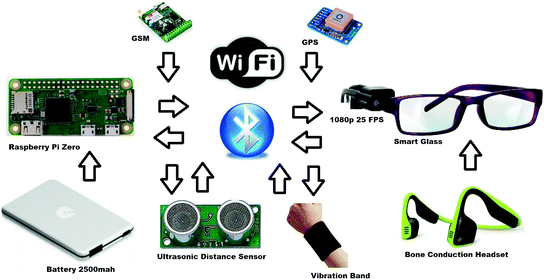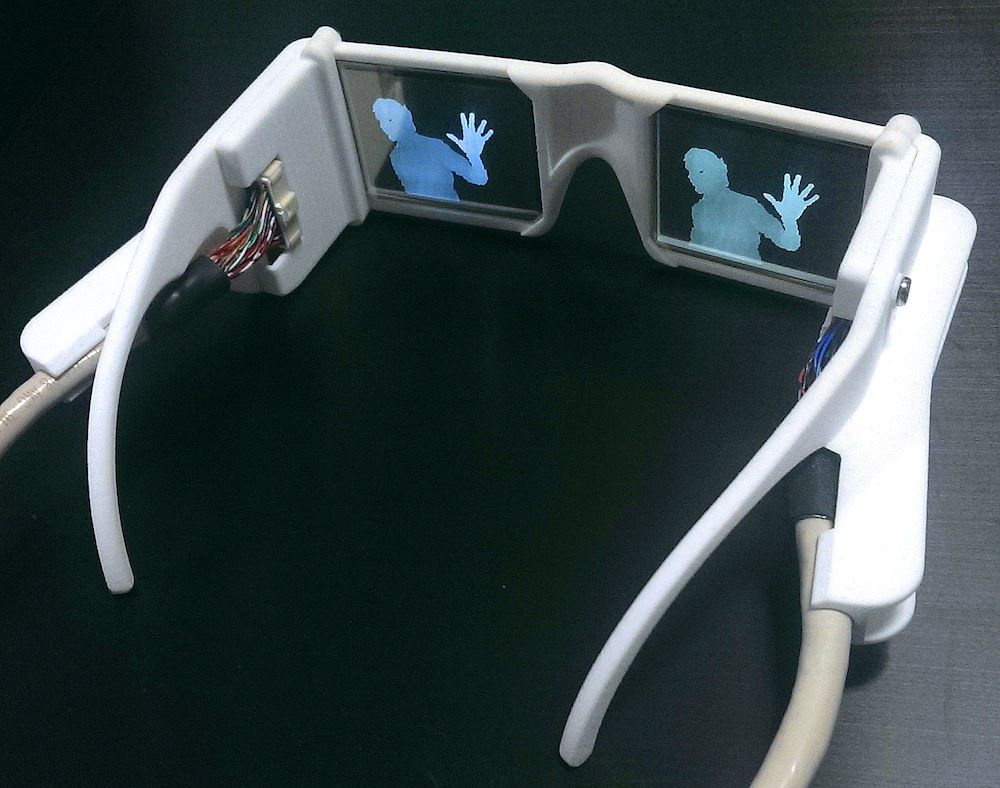AI-Powered Visual Aids: The Next Step in Assistive Technology for the Blind
AI-Powered Visual Aids: The Next Step in Assistive Technology for the Blind
Blog Article
Empowering Independence With Assistive Technology for the Blind
The combination of assistive innovation for individuals that are blind or visually damaged represents a substantial advancement in promoting freedom and boosting quality of life. With a variety of tools-- from display visitors to cutting-edge responsive tools-- these technologies not only promote navigation and communication yet additionally advertise social incorporation and participation in numerous elements of life.
Recognizing Assistive Technology
Although assistive innovation has actually evolved dramatically over the years, its essential purpose continues to be the exact same: to enhance the lifestyle for people with specials needs, especially those that are aesthetically damaged or blind. This modern technology incorporates a broad array of devices and tools that assist in freedom and performance in daily activities.
Assistive innovation can be categorized right into modern and low-tech remedies, each created to meet certain demands. State-of-the-art tools usually include software program applications, specialized hardware, and flexible devices that utilize sophisticated modern technology to offer assistance in different contexts. On the other hand, low-tech services might entail daily things that are changed to improve access, such as magnifiers or responsive markers.
The integration of assistive innovation right into the lives of individuals who are blind or visually harmed not only promotes freedom but also promotes social inclusion and involvement in academic and expert atmospheres. By leveraging these innovations, users can navigate their environments, access information, and communicate successfully, thus enhancing their overall lifestyle. Recognizing assistive technology is critical for caretakers, advocates, and professionals who aim to support people in optimizing their potential and achieving better independence.
Kinds of Assistive Instruments
Assistive tools for the blind and visually impaired are necessary devices that enhance daily obeying dealing with certain obstacles come across by customers. These gadgets can be broadly classified into 3 main types: optical devices, electronic gadgets, and sensory devices.

Sensory gadgets, such as Braille displays and tactile maps, offer alternate methods to get info. Braille presents transform digital text right into Braille, enabling individuals to review via touch. Tactile maps provide spatial understanding with elevated structures and lines, enabling far better ecological awareness.
Together, these assistive gadgets equip people with aesthetic problems to involve more fully with their surroundings, promoting higher self-reliance and self-confidence in day-to-day tasks.

Impact on Life
The combination of assistive innovation into the every day lives of individuals who are blind or visually impaired substantially boosts their capability to connect and navigate with the globe around them. Devices such as screen readers, Braille displays, and mobile applications help with access to info, allowing individuals to engage with electronic web content, interact properly, and take care of day-to-day jobs separately.
Additionally, technologies like smart glasses and navigating applications give real-time help in unknown environments, improving mobility and self-confidence. These devices allow users to identify barriers, checked out indications, and even recognize faces, thus promoting a feeling of freedom in public areas. Additionally, home automation systems, which can be controlled through voice commands, allow people to handle their living atmospheres better, improving comfort and safety.
The influence of assistive innovation extends beyond practical tasks; it promotes social incorporation and emotional wellness. By bridging the space between individuals and their surroundings, these technologies encourage users to participate completely in neighborhood tasks, pursue academic chances, and engage in significant connections. Ultimately, the development of assistive modern technology is important in redefining the possibilities for people who are blind or visually impaired, causing an extra comprehensive and available society.
Success Stories and Testimonies

An additional powerful endorsement originates from Mark, a recent college graduate who made use of display analysis software throughout his scholastic journey. This modern technology enabled him to gain access to course materials and take part in conversations, go now ultimately leading to his effective shift right into the workforce. Mark credit reports assistive technology for empowering him to achieve his occupation goals, emphasizing its function in leveling the having fun field for people with visual disabilities.
In addition, recreation center have reported raised participation in their programs many thanks to the intro of obtainable electronic platforms. These platforms have made it simpler for people to link, share sources, and support each other. These success stories jointly highlight the profound impact of assistive innovation in cultivating self-reliance, enhancing top quality of life, and breaking down obstacles for the aesthetically impaired and blind neighborhood.
Future Fads in Assistive Tech
Emerging technologies are positioned to reinvent the landscape of assistive tech for people who are visually damaged or blind. Advancements in expert system (AI) and artificial intelligence are boosting the abilities of tools, allowing more instinctive user experiences. As an example, AI-driven applications are progressively able to read and identify objects message out loud in real-time, offering customers with important details about their environments.
In addition, developments in wearable modern technology are creating brand-new opportunities for freedom. Smart glasses equipped with increased truth features can overlay essential visit this website information onto the individual's field of view, promoting navigating and communication with the atmosphere. Moreover, the combination of Web of Points (IoT) devices is simplifying accessibility in clever homes, permitting customers to manage home appliances and receive notifications via voice commands or responsive interfaces.
The advancement of braille displays and responsive responses systems is likewise rising, advertising accessibility to digital web content and enhancing communication. As these innovations remain to progress, they promise to enhance daily living, educational chances, and employment prospects for people with aesthetic problems. Constant collaboration in between engineers, individuals, and advocacy groups will be essential in guaranteeing these innovations satisfy the needs of the area efficiently.
Verdict
In final thought, assistive technology plays a crucial role in boosting the self-reliance of people who are aesthetically damaged or blind. By supplying important devices and resources, these technologies facilitate enhanced navigating, communication, and gain access to to information, thus promoting freedom and confidence. The transformative effect of assistive tools not only promotes efficient communication with the environment however additionally encourages social inclusion and involvement in numerous aspects of life, ultimately empowering individuals to flourish within their neighborhoods.
The combination of assistive modern technology for people that are aesthetically damaged or blind stands eyedocs for a significant improvement in promoting self-reliance and improving top quality of life.The assimilation of assistive modern technology right into the lives of people that are blind or aesthetically harmed not just advertises freedom yet also fosters social inclusion and participation in instructional and specialist atmospheres. Eventually, the improvement of assistive modern technology is instrumental in redefining the possibilities for individuals who are visually impaired or blind, leading to a much more comprehensive and easily accessible culture.
Numerous people that are aesthetically impaired or blind have shared motivating success tales that highlight the transformative influence of assistive modern technology on their lives.In verdict, assistive technology plays an essential duty in enhancing the independence of people who are blind or aesthetically impaired.
Report this page